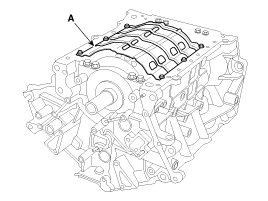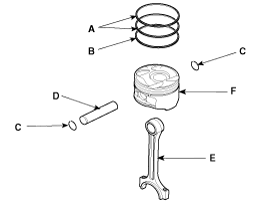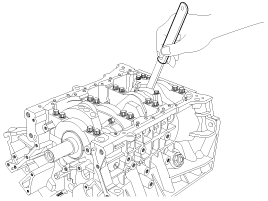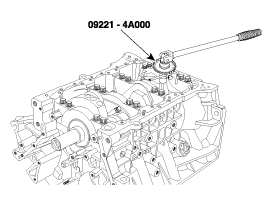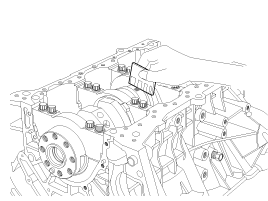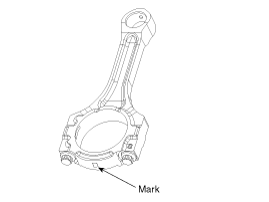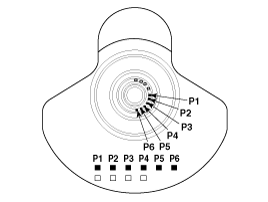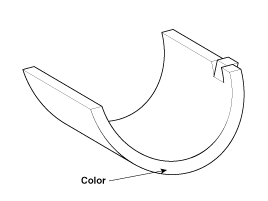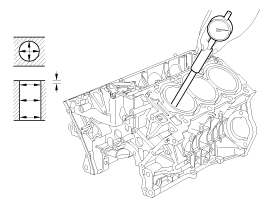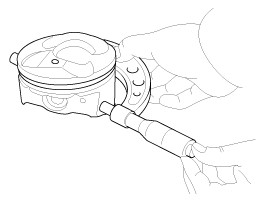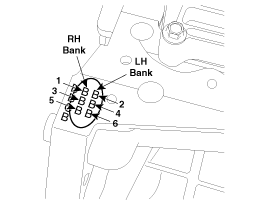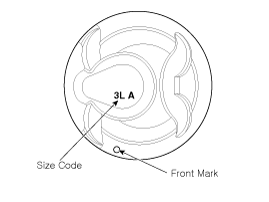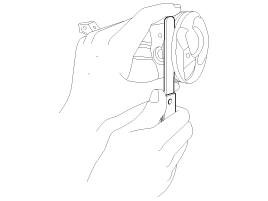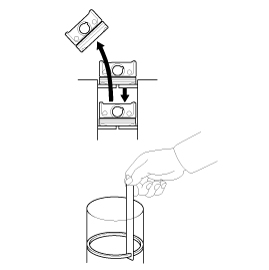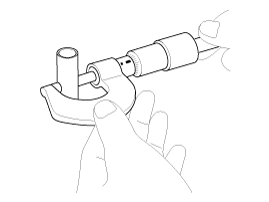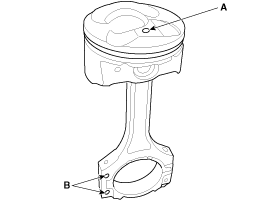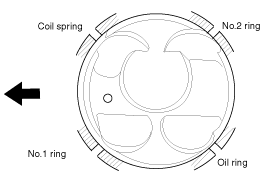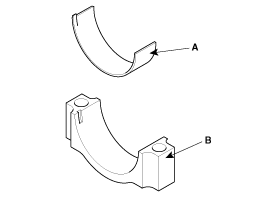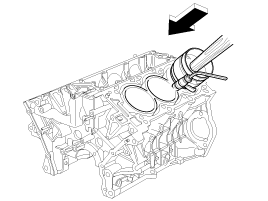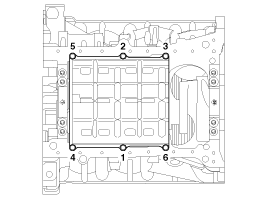 Kia Sedona: Piston and Connecting Rod Repair procedures
Kia Sedona: Piston and Connecting Rod Repair procedures
Third generation YP (2014-2025) / Kia Sedona YP Service Manual / Engine Mechanical System / Cylinder Block / Piston and Connecting Rod Repair procedures
| Disassembly |
|
|
| 1. |
Remove the engine assembly from the vehicle.
(Refer to Engine And Transaxle Assembly - "Engine And Transaxle Assembly") |
| 2. |
Remove the transaxle assembly from the engine assembly.
(Refer to Automatic Transaxle System - "Automatic Transaxle") |
| 3. |
Install the engine assembly to engine stand for disassembly. |
| 4. |
Remove the surge tank.
(Refer to Intake And Exhaust System - "Surge Tank") |
| 5. |
Remove the intake manifold.
(Refer to Intake And Exhaust System - "Intake Manifold") |
| 6. |
Remove the exhaust manifold.
(Refer to Intake And Exhaust System - "Exhaust Manifold") |
| 7. |
Remove the cylinder head assembly.
(Refer to Cylinder Head Assembly - "Cylinder Head") |
| 8. |
Remove the drive plate and adapter plate.
(Refer to Cylinder Block - "Drive Plate") |
| 9. |
Remove the rear oil seal case.
(Refer to Cylinder Block - "Rear Oil Seal") |
| 10. |
Remove the timing chain.
(Refer to Timing System - "Timing Chain") |
| 11. |
Remove the water temperature control assembly.
(Refer to Cooling System - "Water Temperature Control Assembly") |
| 12. |
Remove the lower oil pan and upper oil pan.
(Refer to Lubrication System - "Oil Pan") |
| 13. |
Remove the oil pump.
(Refer to Lubrication System - "Oil Pump") |
| 14. |
Remove the oil filter body.
(Refer to Lubrication System - "Oil filter body") |
| 15. |
Remove the baffle plate (A).
|
| 16. |
Check the connecting rod end play. |
| 17. |
Check the connecting rod cap oil clearance. |
| 18. |
Detach the piston and connecting rod assemblies from the cylinder block.
|
| 19. |
Disassemble the piston rings.
|
| 20. |
Disassemble the connecting rod from the piston.
|
| Inspection |
Connecting Rod And Crankshaft
| 1. |
Check the connecting rod end play.
Using a feeler gauge, measure the end play while moving the connecting rod back and forth.
|
| 2. |
Check the connecting rod bearing oil clearance.
| |||||||||||||||||||||||||||||||||||||||||||||||||||||||||||||||||||||||||||||||||||||||||||||||||||||||||||
| 3. |
Check the connecting rod.
|
Piston
| 1. |
Clean piston
|
| 2. |
Check the piston-to-cylinder clearance by calculating the
difference between the cylinder bore inner diameter and the piston outer
diameter.
|
| 3. |
Select piston by the cylinder bore class.
|
Piston Rings
| 1. |
Inspect the piston ring side clearance.
Using a feeler gauge, measure the clearance between new piston ring and the wall of the ring groove.
If the clearance is greater than maximum, replace the piston. |
| 2. |
Inspect piston ring end gap.
To measure the piston ring end gap, insert a piston ring into
the cylinder bore. Position the ring at right angles to the cylinder
wall by gently pressing it down with a piston. Measure the gap with a
feeler gauge. If the gap exceeds the service limit, replace the piston
ring. If the gap is too large, recheck the cylinder bore diameter
against the wear limits. If the bore is over the service limit, the
cylinder block must be replaced.
|
Piston Pin
| 1. |
Measure the diameter of the piston pin.
|
| 2. |
Measure the piston pin-to-piston clearance.
|
| 3. |
Check the difference between the piston pin diameter and the connecting rod small end diameter.
|
| Reassembly |
|
| 1. |
Assemble the piston and the connecting rod.
|
| 2. |
Install the piston rings.
|
| 3. |
Install the connecting rod bearings.
|
| 4. |
Attach the piston and connecting rod assemblies on the cylinder block.
|
| 5. |
Install the baffle plate.
Install and uniformly tighten the baffle plate bolts, in several passes, in the sequence shown.
|
| 6. |
Assemble the other parts in the reverse order of disassembly. |
 Piston and Connecting Rod Components and Components Location
Piston and Connecting Rod Components and Components Location
Components
1. Piston ring2. Piston pin3. Snap ring4. Piston5. Connecting rod6. Connecting rod upper bearing7. Connecting rod lower bearing8. Connecting rod bearing cap
...
 Crankshaft Components and Components Location
Crankshaft Components and Components Location
Components
1. Crankshaft upper bearing2. Thrust bearing3. Crankshaft4. Crankshaft lower bearing5. Main bearing cap
...
Other Information:
IMS (Integrated Memory System) module Components and Components Location
Components
Connector Pin Information
No.Connecter AConnecter BConnecter CConnecter D1-Batt (+)--2Front tilt motor (Up)GND-Seat rear height sensor3Rear height motor (Up)Batt (+)Slide switch signa ...
Seat Heater Schematic Diagrams
Circuit Diagram
Connector Pin Information
No.DescriptionNo.Description1Power Seat Batt (+)18Left NTC (+)2Left air ventilation/heater cushion batt (+)19Air ventilation/heater ECU batt (+)3Left ai ...
Categories
- Home
- First Generation
- Second Generation
- Third generation
- Kia Sedona YP 2014-2025 Owners Manual
- Kia Sedona YP 2014-2025 Service Manual
Copyright © www.kisedona.com 2016-2025



